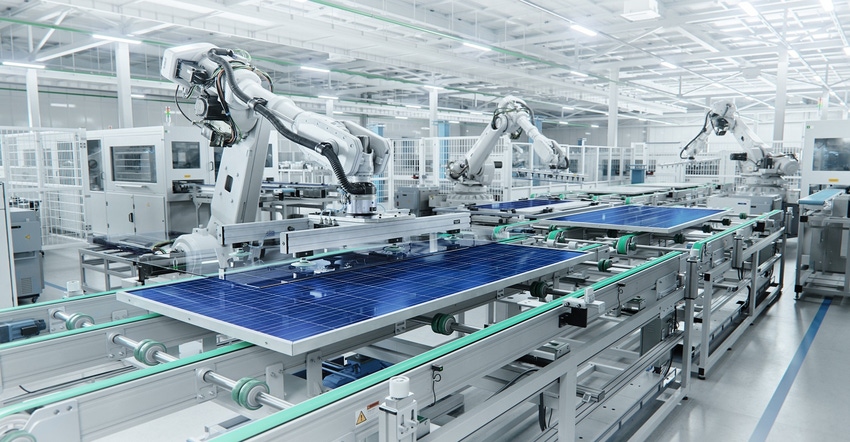US Manufacturing Surpasses Expectations
Manufacturing Day on October 6 is a good day to look at job growth and the trends affecting manufacturing.
October 3, 2023

Here's a round up of good news about manufacturing growth in the US. Manufacturing Day is just the right time for sharing this. “National Manufacturing Day is an opportunity for manufacturers to highlight their work and to energize a future pipeline of skilled workers," Nick King, CEO and founder of Data Kinetic, told Design News. "When we talk about ‘Industry 4.0’ for manufacturing, our top priority should be the safety of the workforce who are the true asset of the industry."
Manufacturing has demonstrated continued strength since the end of the pandemic. The sector continues to surpass expectations. According to Deloitte’s annual Manufacturing Industry Outlook, overall demand and production capacity are hitting new highs. While manufacturers continue to struggle with talent challenges and supply issues that could slow the rate of growth, things are looking bright for the sector.
Manufacturing is also expected to continue adding jobs. Goldman Sachs estimates the US economy could add 200,000 to 250,000 new manufacturing jobs over the next two years.
Here are some stats from the National Institute of Standards and Technology (NIST):
In 2021, Manufacturing contributed $2.3 trillion to US GDP amounting to 12.0 % of total U.S. GDP. If you include direct and indirect impact (purchases from other industries), manufacturing contributed an estimated 24 % of GDP.
In 2020, US manufacturing imported 18.2 % of its intermediate goods/services, resulting in 10.6 % of the output being of foreign origin.
According to the Current Population Survey, there were 14.7 million employees in US manufacturing in 2021, representing 9.6 % of total U.S. employment.
Manufacturing accounted for 76.6% of total US environmental impact according to NIST’s Manufacturing Cost Guide.
Average compensation in US manufacturing is 8.8 % higher than that for total private industry
Trends in US Manufacturing
Deloitte identified five trends to watch in manufacturing:
Technology
In its study, Deloitte noted that manufacturers need to increase their digital investment over the past few years and accelerate their adoption of emerging technologies. Companies with higher digital maturity have shown greater resilience, as did those that accelerated digitalization during the pandemic. Continued investments in advanced manufacturing technologies can help develop the required agility.
Talent
Manufacturers need to implement a broad range of talent management strategies to reduce voluntary exits. Addressing the tight labor market and workforce churn amid shifting talent models is expected to remain a top priority for most manufacturers. Despite a record level of new hires, job openings in the industry are still hovering near all-time highs. Additionally, voluntary separations continue to outnumber layoffs and discharges, indicating substantial workforce churn. This prevailing workforce shortage, elevated by supply chain limitations, is reducing operational efficiency and margins.
Supply Chain
Manufacturers can turn to time-tested mitigation strategies with enhanced tactics to achieve supply assurance. Of the executives Deloitte surveyed, 72% believe the persistent shortage of critical materials and the ongoing supply chain disruptions present the biggest uncertainty for the industry, even in the coming year. Manufacturers are mitigating these risks not only with increased utilization of digital technology but also with time-tested approaches including building local capacity and moving from just-in-time sourcing to create redundancy in the supply chain.
Smart Factory
Deloitte noted that a holistic approach to smart factory initiatives can unlock new horizons. Manufacturers will likely continue progressing toward smart factory transformations, as these initiatives drive future competitiveness. Many manufacturers are making investments in laying the technology foundation for their smart factories. One in five manufacturers is already experimenting with underlying solutions or actively developing a metaverse platform for their products and services.
Sustainability
Manufacturers should focus on corporate social responsibility. Deloitte pointed out that the fast-evolving environmental, social, and governance (ESG) landscape may require close monitoring. Many manufacturers voluntarily comply with a complex network of reporting regulations, ratings, and disclosure frameworks. But regulators globally are also moving toward requiring more disclosures for nonfinancial metrics. Manufacturers are progressing toward their ESG commitments by making operational changes across their value chains.
About the Author(s)
You May Also Like




